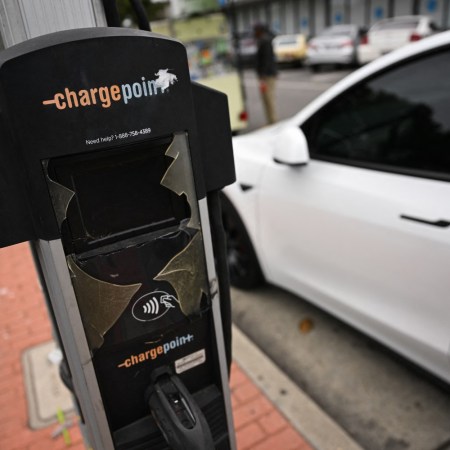When a presidential administration that’s supportive of EVs and their charging infrastructure is followed by an administration that is, let’s say, skeptical on both, it can make for policy whiplash. And, based on a memo recently issued by the U.S. Department of Transportation, that’s precisely what we’re about to see play out.
Part of the 2021 Bipartisan Industry Law directed billions of dollars in funding to build out electric vehicle charging infrastructure across the country. As The Washington Post reported last year, this took place under the umbrella of the National Electric Vehicle Infrastructure program — with the Biden administration adding to this amount shortly before leaving office.
The memo, dated February 6, 2025, states that the DOT’s current leadership “has decided to review the policies underlying the implementation of the NEVI Formula Program.” To that end, the Federal Highway Administration “is also immediately suspending the approval of all State Electric Vehicle Infrastructure Deployment plans for allfiscal years.” In other words, if you were planning on receiving federal money for an EV charging station, you might be waiting for a lot longer than expected.
That said, the situation is a little more complicated than simply one administration looking to undo the work of another. Michelle Lewis at Electrek pointed out that this memo — like a number of memos and executive orders recently issued by the Trump administration — is likely overstepping the bounds of the executive branch and taking an action that is in the purview of the legislative branch of government.
Building More EV Chargers Is Important — But They Also Need to Work
When fast charging isn’t as fast as you’d thought“The Trump administration is clearly trying to stop or pause programs like NEVI for as long as they can, but I assume lawsuits from states will start soon, and this will go to court and Congress,” Loren McDonald — the chief executive of EV data company Paren — told Electrek. The DOT’s memo says a lot — but its actual effects are less clear right now.
This article appeared in an InsideHook newsletter. Sign up for free to get more on travel, wellness, style, drinking, and culture.



















